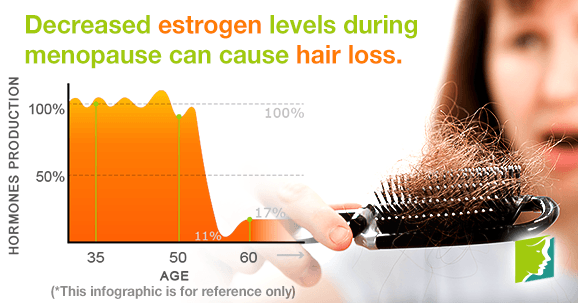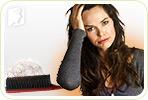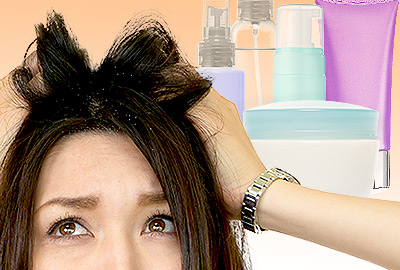Baldness or partial baldness in men is generally accepted as a natural part of aging; though distressing for men, it is a symptom that is widely socially understood. There seems to be more of a stigma attached hair loss in women, perhaps because little is understood about the way female hormones affect the hair follicles.
Androgen and Hair Loss
Androgen is a male hormone - present in men and women - which is circulated into dihydrotestosterone within the hair follicles, to maintain healthy cells and hair growth. Each hair typically grows at a rate of around half an inch per month and will continue to grow for between 2 - 6 years before falling out naturally. Androgen levels decline with age, which can result in hair becoming thin or falling out of the scalp. This is known as androgenic alopecia, or patterned baldness.
In women, hair will usually become thin or patchy around the top or crown of the scalp, and the front hairline will remain intact. While hair on the scalp thins, belly-button, pubic, and facial hair may become coarser and more noticeable. Unlike in men, total baldness or near-total baldness is unlikely to occur in women. This key difference is due to estrogen levels.
Estrogen, Progesterone, and Hair Loss
The ratio of estrogen to androgen is thought to be highly influential in androgenic alopecia. Estrogen and, to some extent, progesterone are known to regulate hair loss, though the reason for this is not fully understood.
During menopause estrogen levels decline, which can exacerbate the natural hair loss that occurs as a symptom of aging. Other conditions and symptoms that are commonly associated with menopause, such as thyroid disorders, can also trigger hair loss.
During pregnancy, when estrogen levels increase, women may notice increased hair growth, though this is likely to fall out postpartum.
How Is Hair Loss Treated?
Herbal and medical hair loss treatments are aimed at stimulating the regrowth of hair to replace that has fallen out. As of yet there is no known preventative treatment for alopecia. Sometimes the symptom is treated through hormone-regulating treatments, such as hormone-replacement therapy, which helps to reduce hair loss by increasing estrogen levels in the body. While effective, this form of treatment is not without its risks and side-effects, and should be considered only as a last resort after natural solutions to hair loss have been attempted.
While hormones play a large role in hair loss, it's worth remembering that other conditions and lifestyle factors can also trigger it. Autoimmune diseases, such as diabetes, Grave's disease, and rheumatoid arthritis, can cause hair loss, as can some harsh forms of medication, including chemotherapy. Lifestyle factors, like extreme dieting, physical stress (e.g., childbirth) and emotional stress may also trigger or intensify temporary hair loss.
Sources
- MedlinePlus (26th January 2012) Female pattern baldness. Retrieved: 27th March 2014 from http://www.nlm.nih.gov/medlineplus/ency/article/001173.htm
- PubMed (1998) Estrogen and progesterone receptors in androgenic alopecia versus alopecia areata. Retrieved: 27th March 2014 from http://www.ncbi.nlm.nih.gov/pubmed/9557785
- PubMed (March 2008) Female pattern baldness may be triggered by low oestrogen to androgen ratio. Retrieved: 27th March 2014 from http://www.ncbi.nlm.nih.gov/pubmed/18333699
- Better Health Channel (September 2013) Menopause - hormone-replacement therapy. Retrieved: 27th March 2014 from http://www.betterhealth.vic.gov.au/bhcv2/bhcarticles.nsf/pages/Menopause_hormone_replacement_therapy
- NHS (12th November 2012) Hair loss - causes. Retrieved: 27th March 2014 from http://www.nhs.uk/Conditions/Hair-loss/Pages/Causes.aspx




